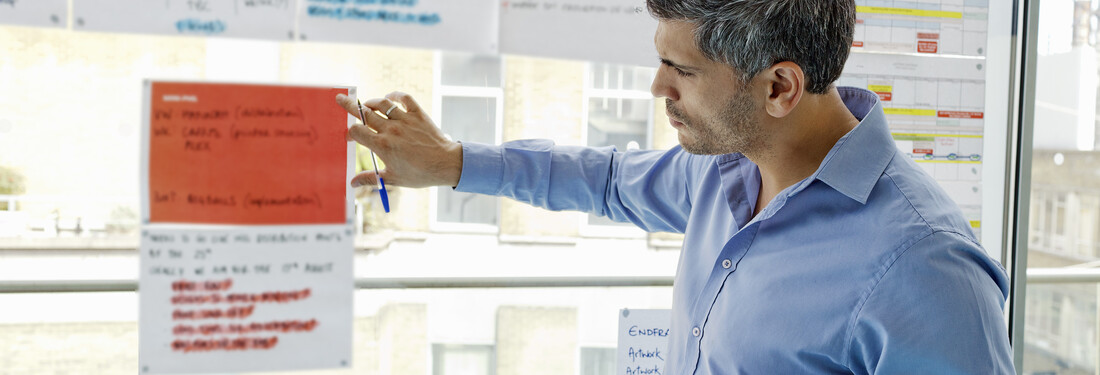Sense-checking what’s intended: Testing the road worthiness of any plan

Your project plan may make complete sense to you, but how does it look to other stakeholders and what are its chances of working in practice? In my previous blog post, I outlined an approach to planning that focused on communicating the intent behind your plan. In this post, I’ll suggest techniques you might use to check those assumptions and give your plan resilience.
Thinking backwards
‘Begin with the end in mind’ is the second of Steven R. Covey’s Seven Habits of Highly Effective People and given you’ve gone to the trouble of defining your intent, that’s a good place to start planning backwards.
Backwards planning
This involves mapping each of the prior, prerequisite stages beginning with the outcome. What do you need to do to achieve these outcomes in order to move forward? It’s a great technique for ironing out any inconsistencies in your plan and for encouraging you to be more goal oriented. When you are planning chronologically, you tend to focus on all the obstacles that stand between you and your goal; when planning backwards, that isn’t an issue because you’re starting from success.
You can also harness this form of future retrospection via pre-mortems. Invite your team to imagine that you’re two, three or more years into the plan (the timescale should relate to the overall length of the project schedule) and that the project has definitively crashed. The more convincingly you can describe the crash the better your chances of engaging their imagination. Now invite each of them to identify what has caused the project to fail and together build the story of the failure, which you can then use to look at the project risks and to adapt your plan to turn disaster into success.
Imagining the worst … and the best of consequences
Every plan has unintended as well as intended consequences. Each decision you make during a project may take you nearer to your outcomes, but it also involves closing down options. The Cabinet Office has developed a very helpful framework, the INCASE Framework, that you can use to double check what you are planning:
Intended consequences: if your project is successful, are you sure any systems, processes or infrastructure you have created can handle subsequent demand? Remember the news stories of the terminal 5 baggage system which failed immediately the terminal opened?
Non-target audiences: who is outside your stakeholder map and isn’t a beneficiary of your project but could nevertheless derail your plan? For example, the Sustainable Farming Incentive, is an environmental land management scheme designed to encourage farmers to change how they work. What happens if ramblers, for example, are affected by what farmers do and start marching in protest?
Compensatory behaviours: to continue the above example, what happens if farmers are so impressed by your incentive that they start to set aside far more land for rewilding than you had anticipated?
Additional behaviours: stakeholders are remarkably difficult to predict and influencing their behaviour is a complex process that is fraught with risk.
Signalling: is there a risk that your efforts to encourage farmers towards more sustainable food production is seen by other parts of the food supply chain who then expect incentives from government to improve their part of the production process too?
Emotional impact: farmers are uniquely connected to the land. Is there a risk that your scheme may be the final straw and that, overwhelmed by the increasing bureaucracy, large numbers of them leave the industry.
You get the idea!
Looking at the guard rails
The framework for communicating intent I shared with you in the previous blog, included a step for communicating the ‘anti-goals’, which are typically those things that you definitely don’t intend with your plan. This is a great sense checker for the requirements that you have articulated.
How many projects manage to achieve buy-in from stakeholders who then gradually become disaffected as the project unrolls because they had read the plan and interpreted it as delivering far more of what they wanted than was the case?
Have you taken the time to spell out not only the requirements of the project but to also make it clear, at the level of the overall project vision, what your project will not deliver?
Is your plan fit for purpose?
Your plan is a key tool for achieving buy-in and alignment from citizens or other key stakeholders. It’s also the basis on which you map the money, raw resources and people to the lifecycle of the delivery. And it’s the map that your project delivery team can use to help them adjust what happens and signal if they think you are in danger of drifting.
Each of these expressions of the plan needs to be aligned and integrated, but each will require a different level of language and different imagery if you are to ensure that all of those groups of individuals within the stakeholder community, the client organisation, the delivery supply chain and the project delivery team is equipped to understand exactly what you intend.
You may also be interested in:


1 comments
Log in to post a comment, or create an account if you don't have one already.
Thanks, Jonathan - appreciated. The above-described framework URL link, for ease of reference, is shown below. https://gcs.civilservice.gov.uk/publications/in-case-a-behavioural-approach-to-anticipating-unintended-consequences/